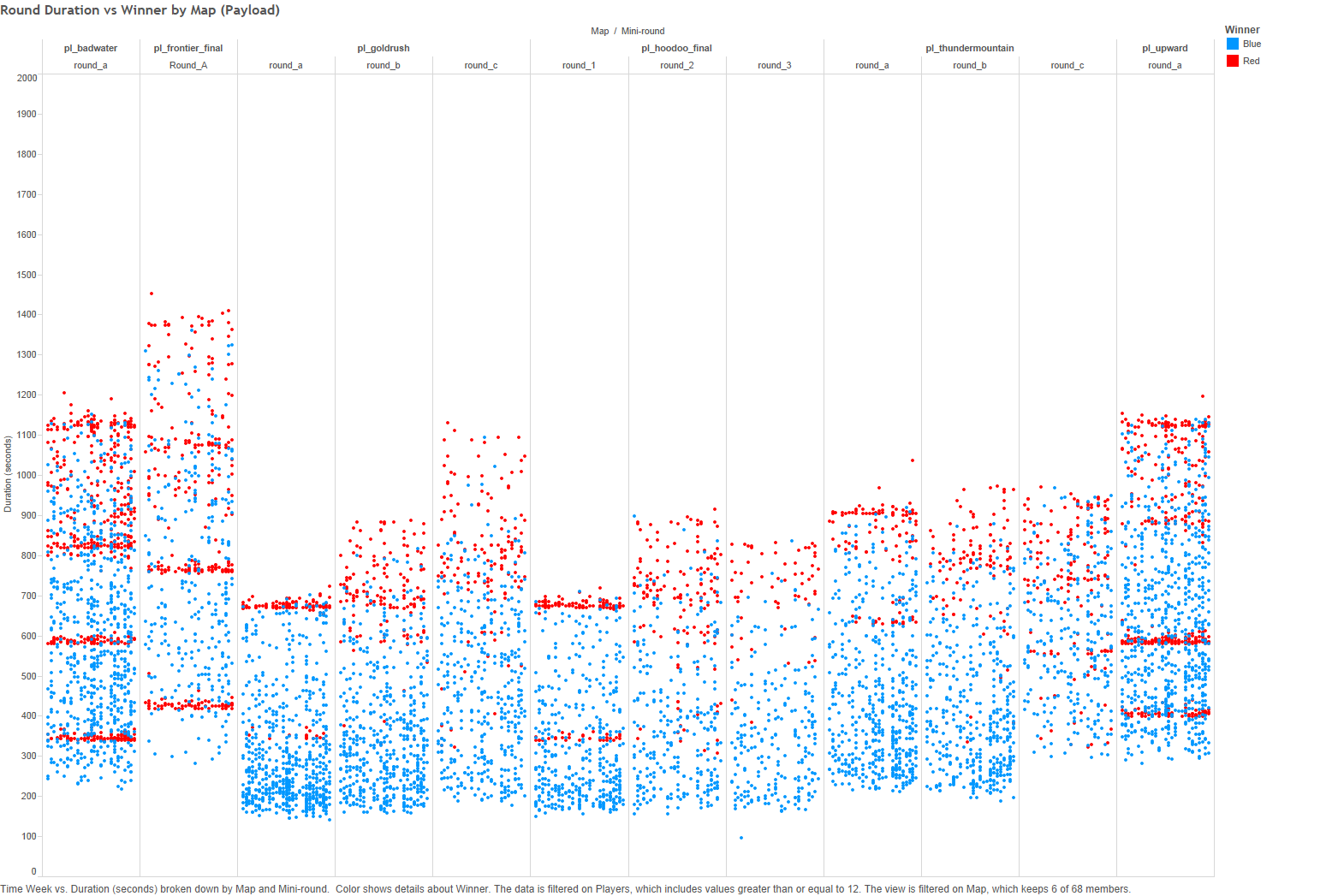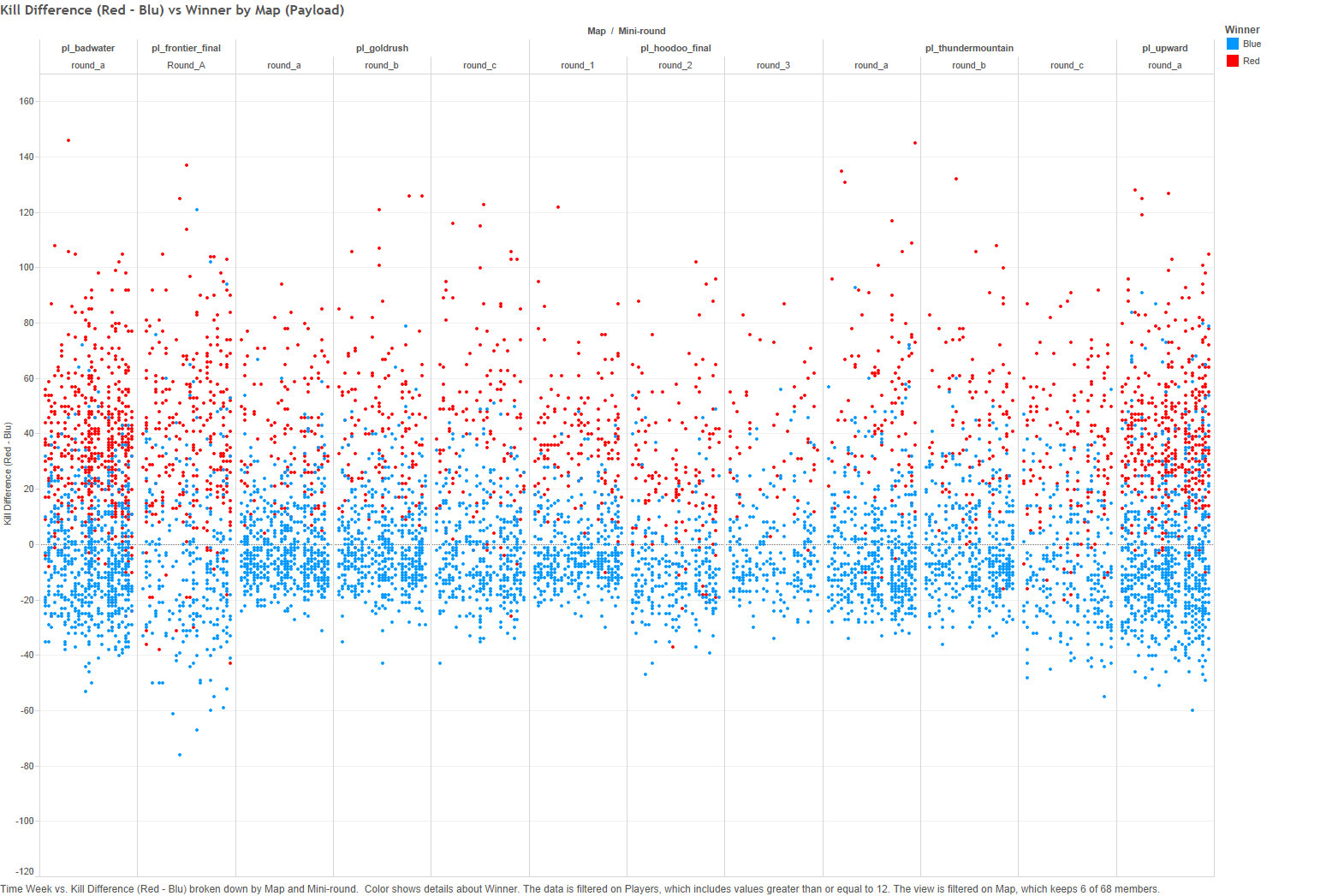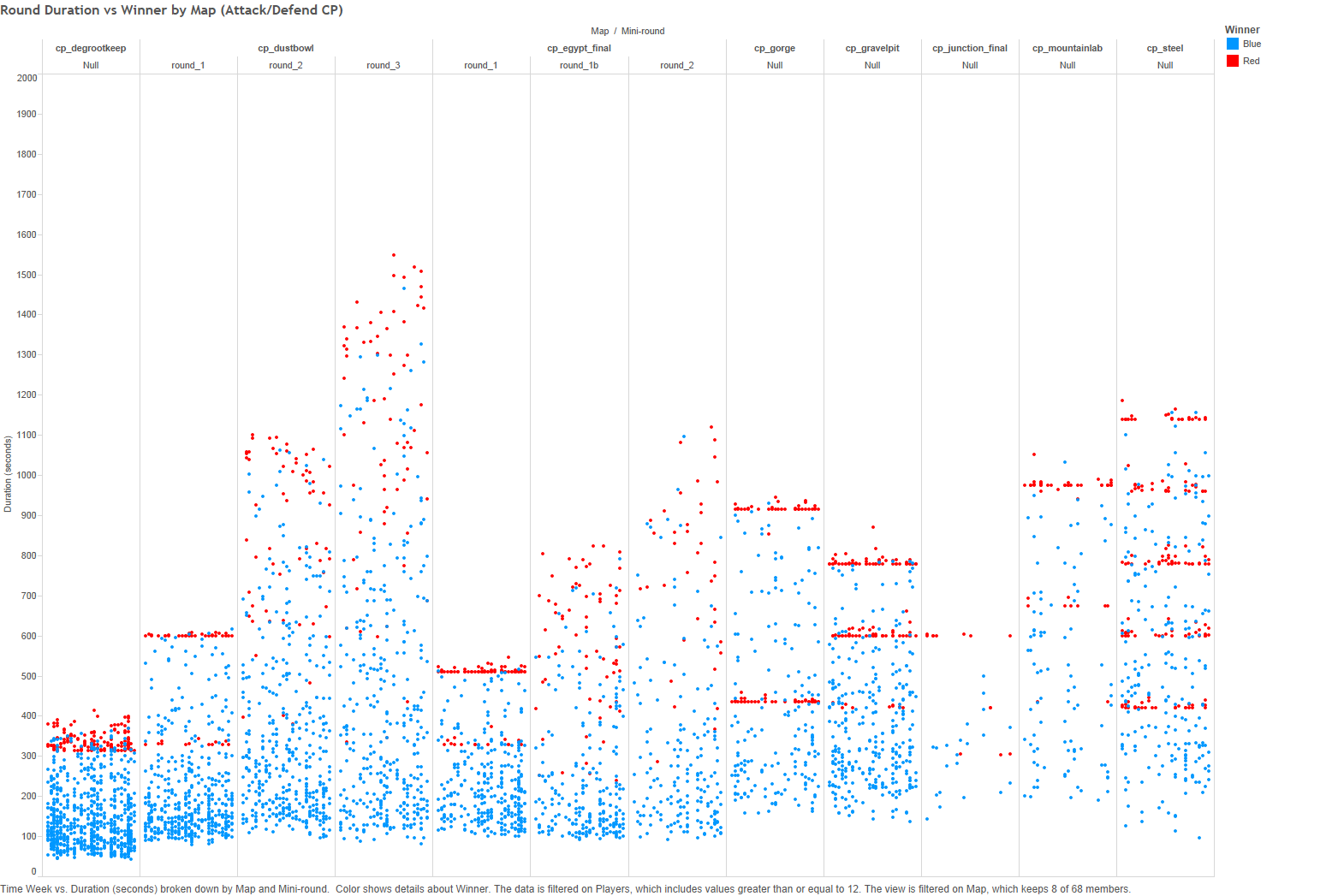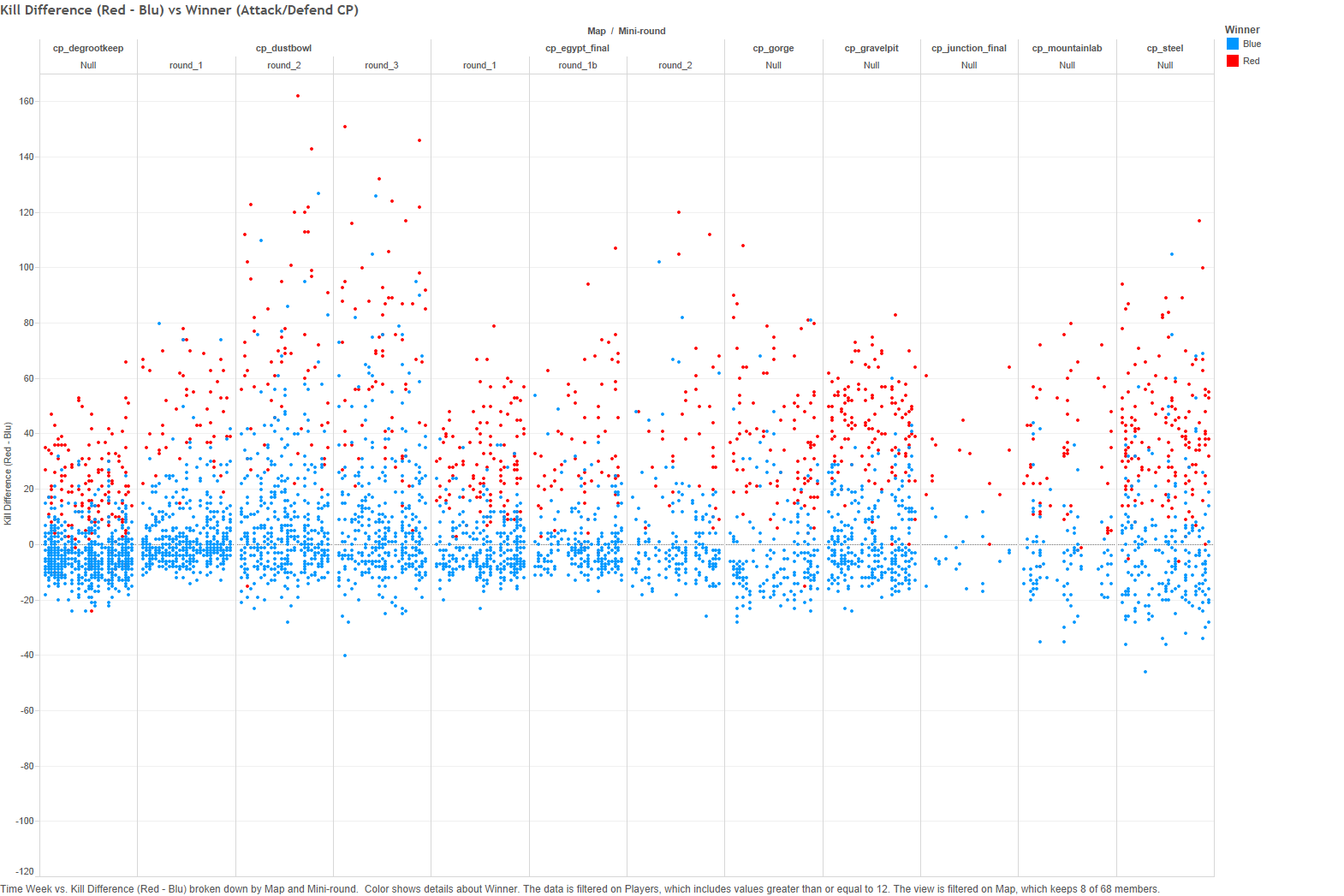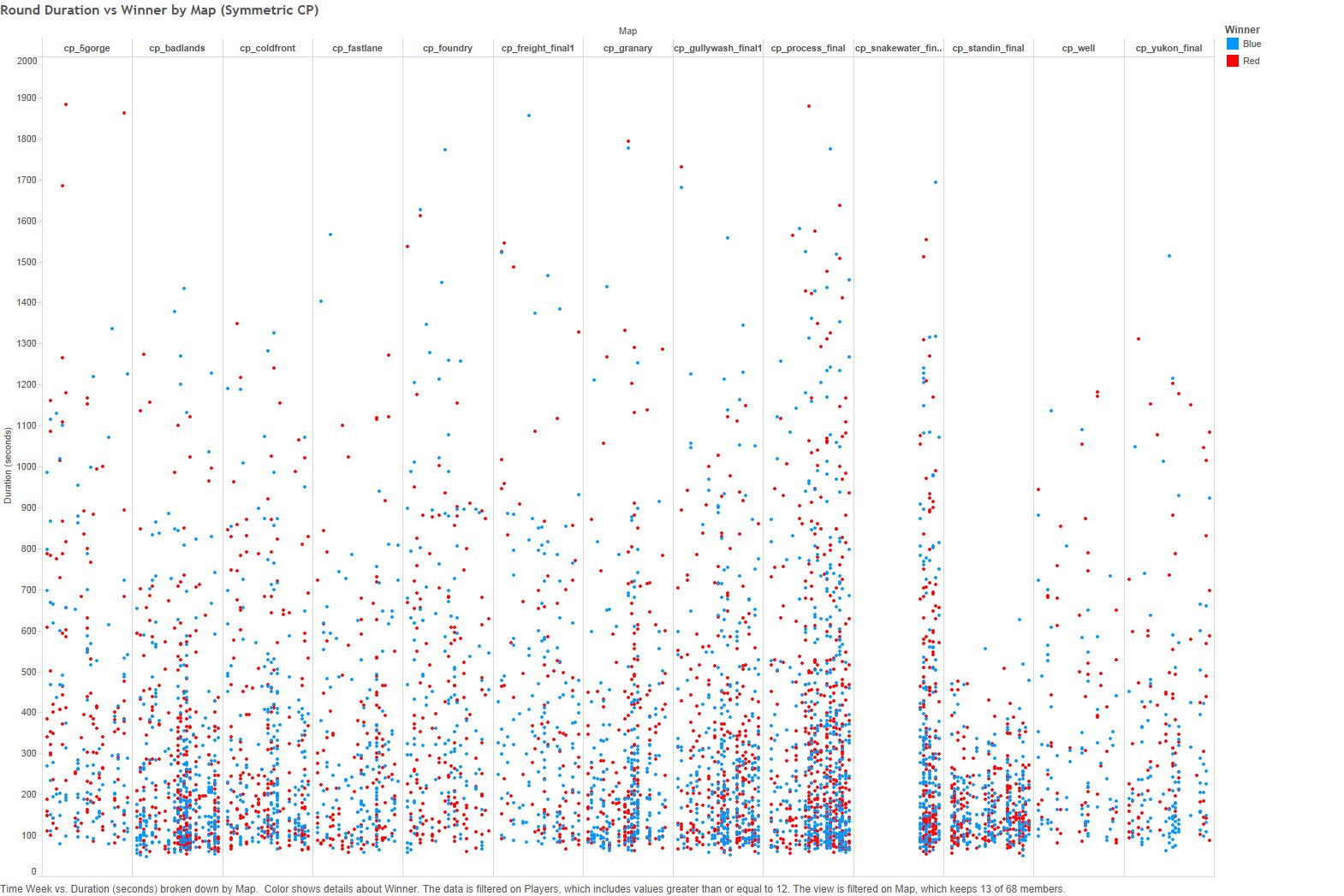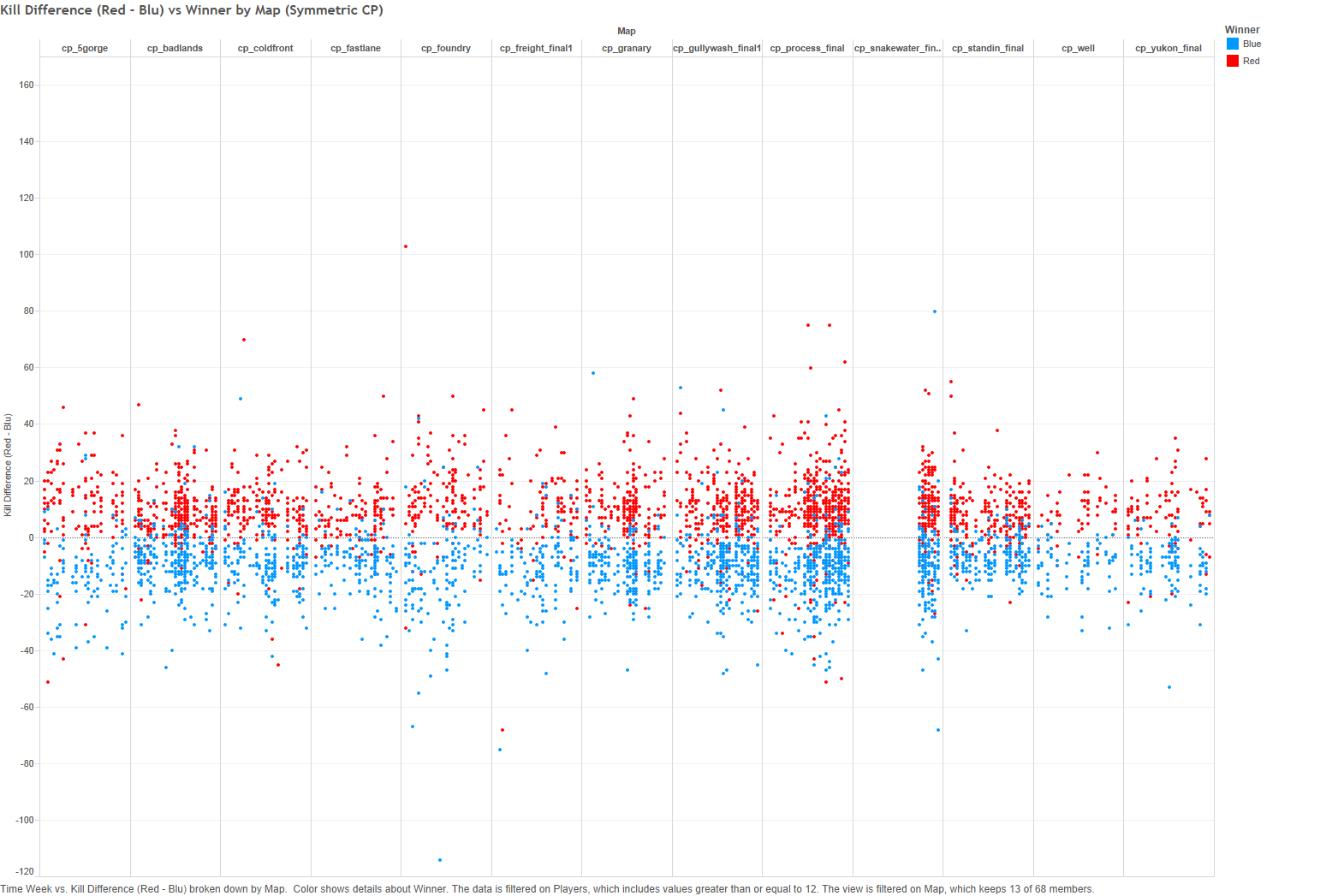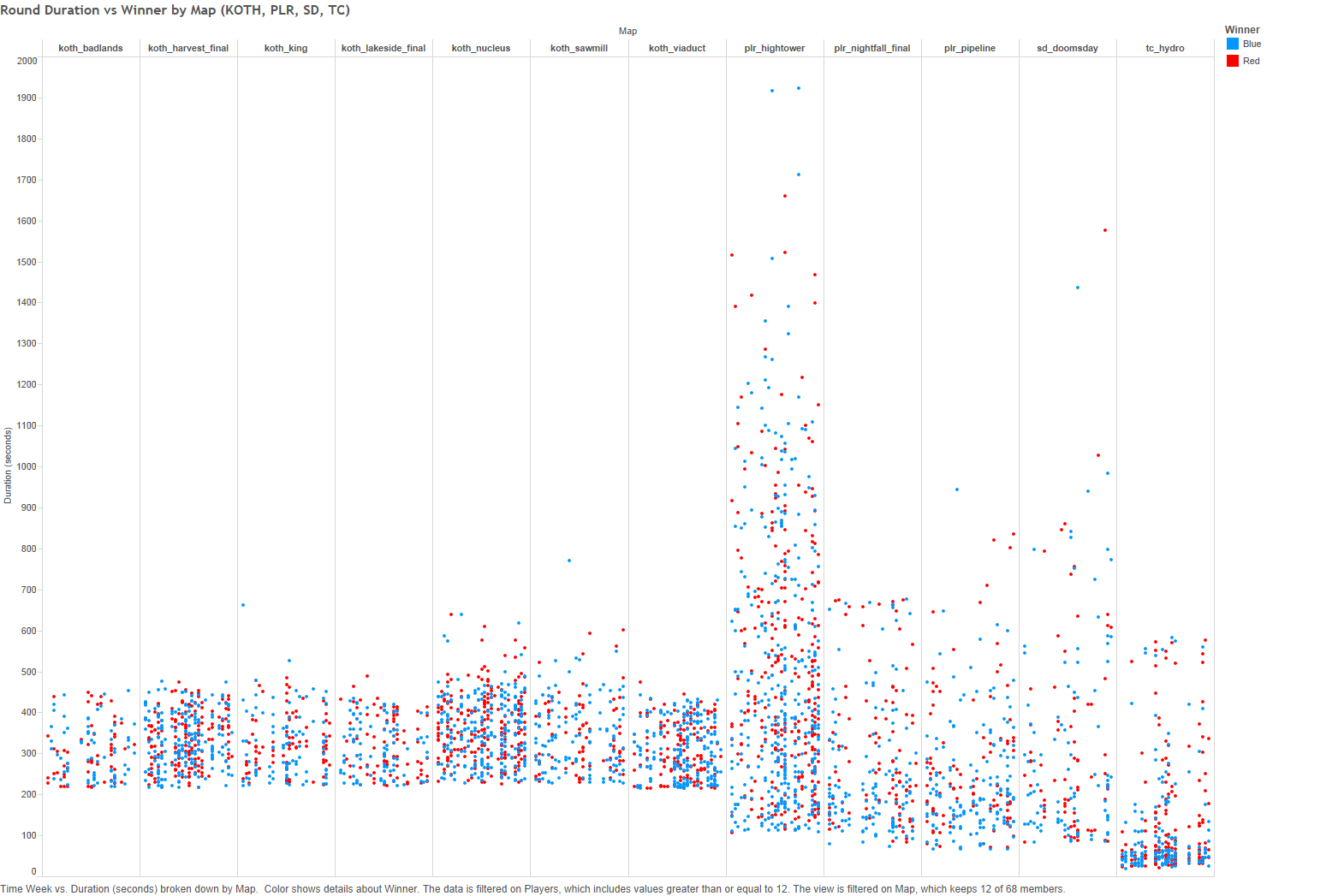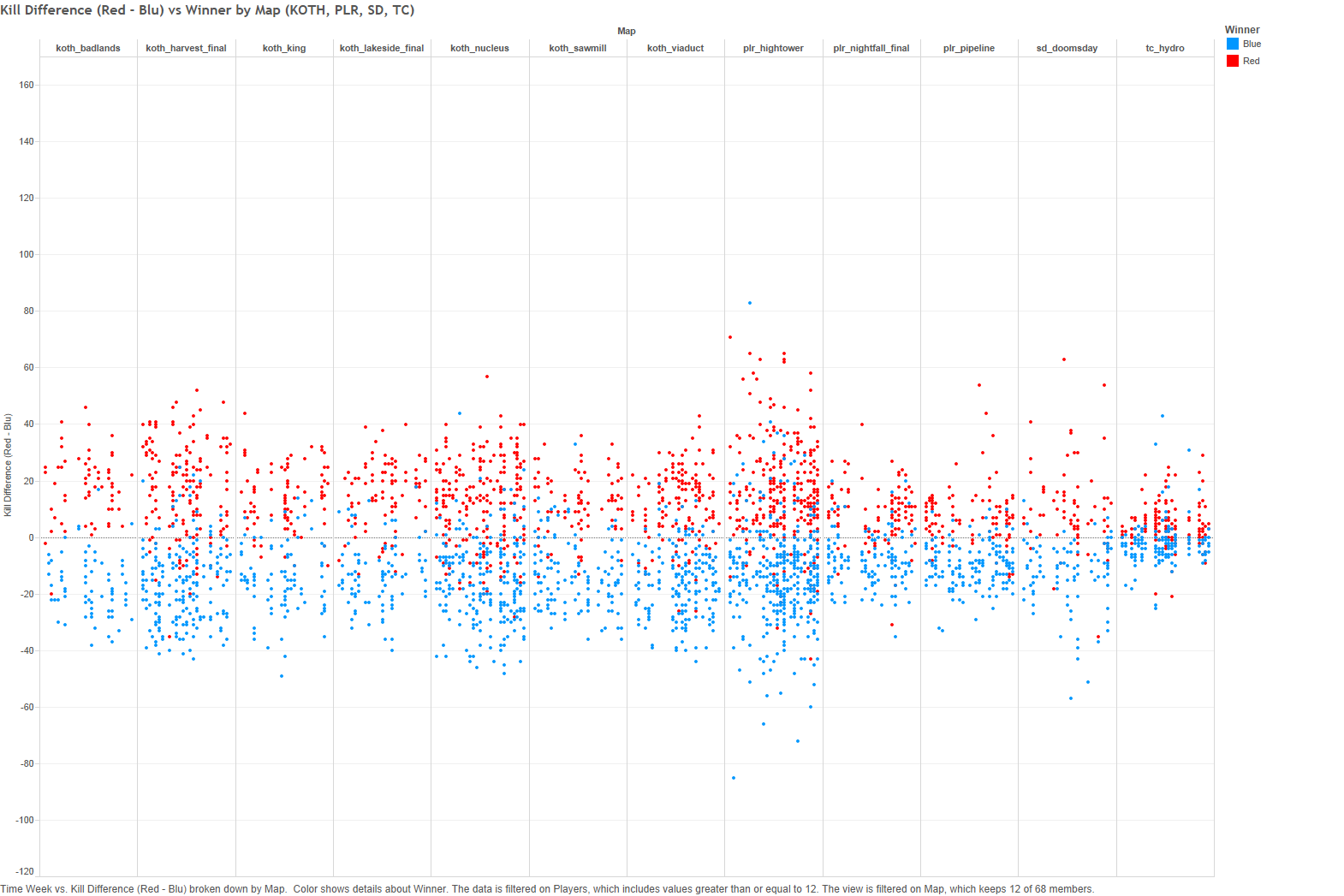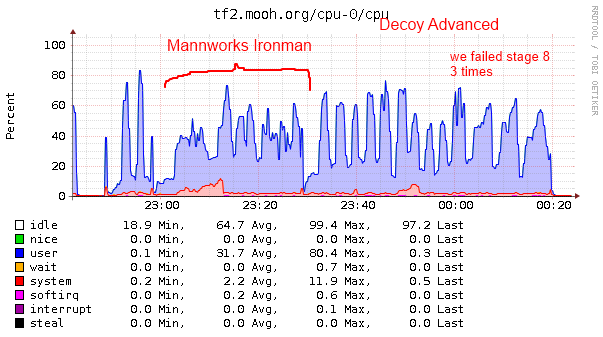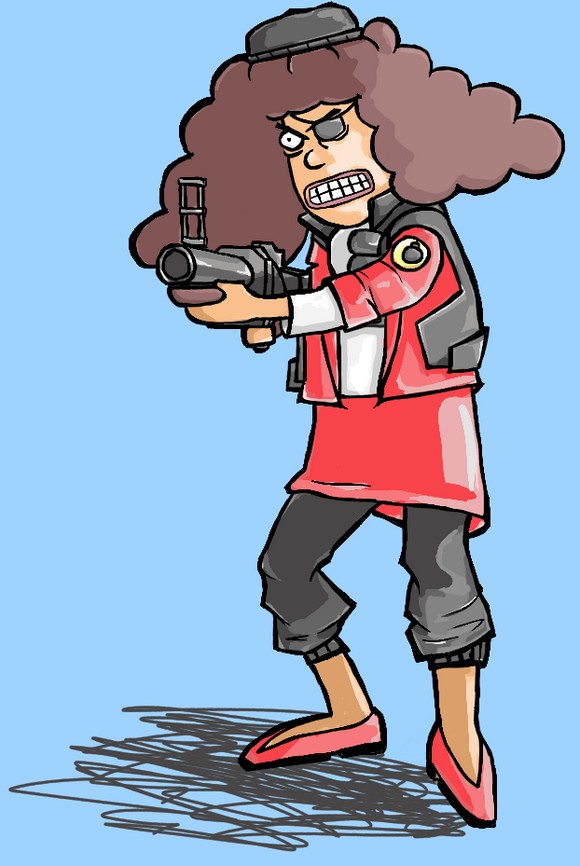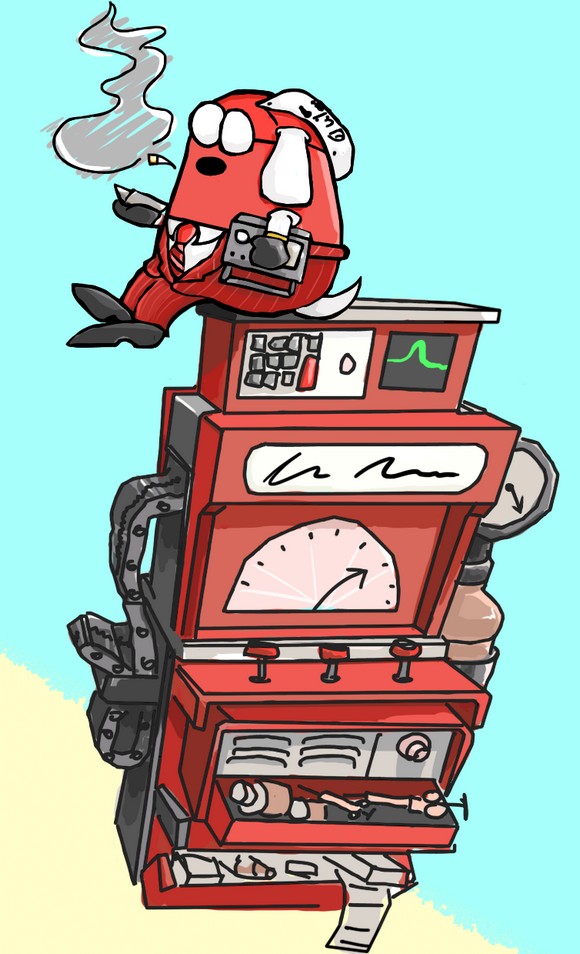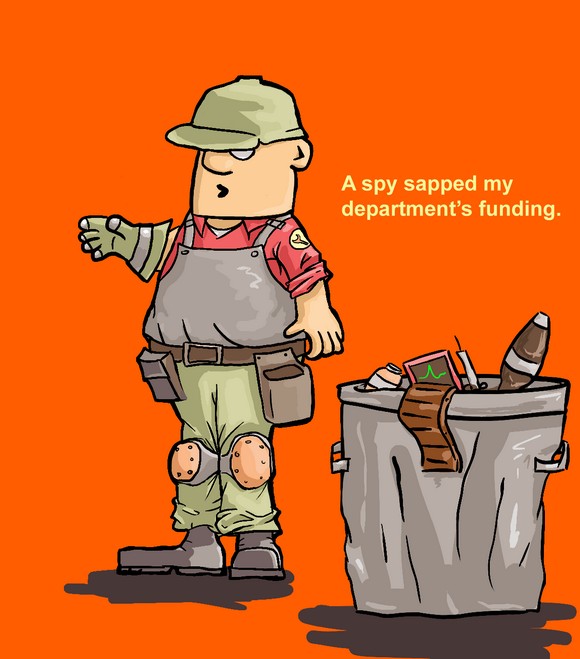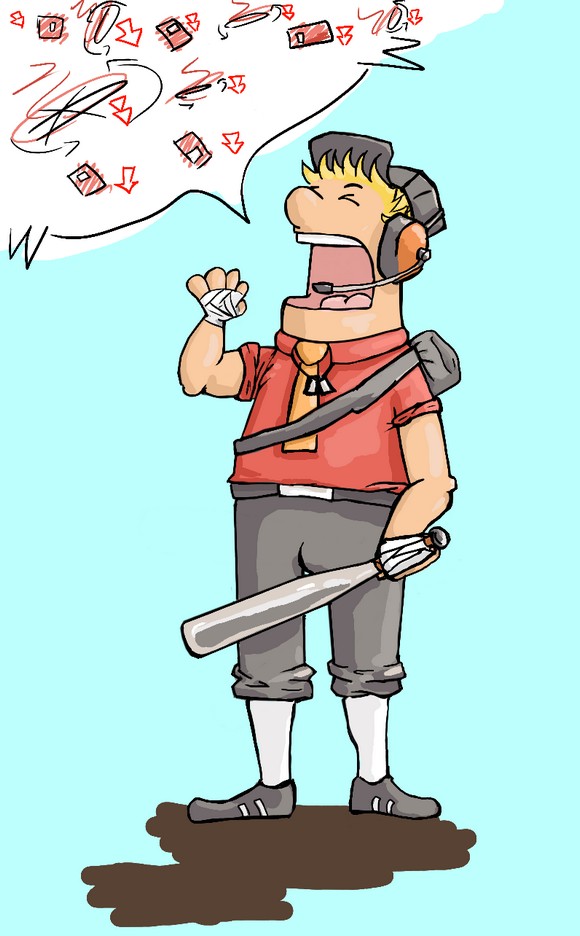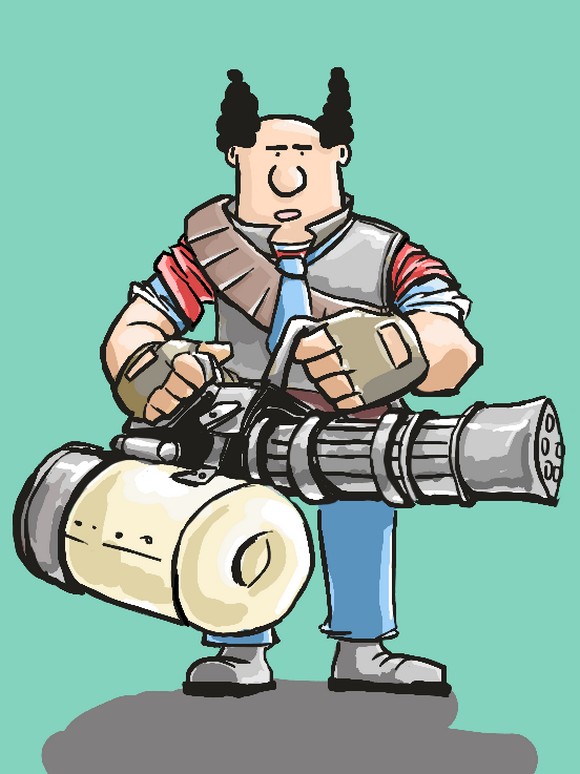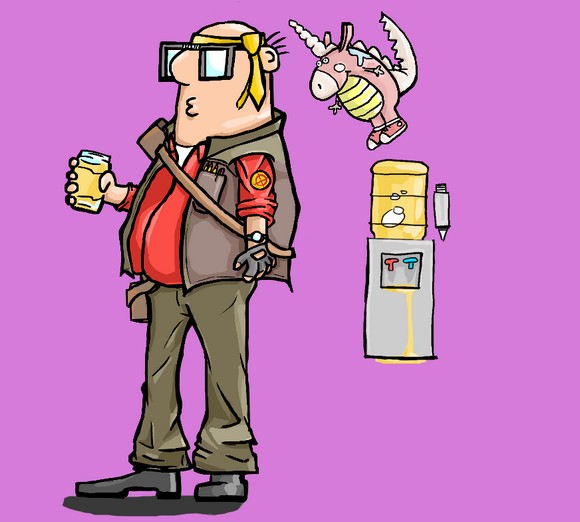As background for non Smurfy Fortress regulars, Smurfy Fortress was one of the last Australian TF2 communities.
After 3 years, and with increasing personal & work commitments, I decided it was time for Smurfy's run to end and on 20 November 2015 I announced that Smurfy Fortress would shut down a month later.
Smurfy Fortress was recognised as having possibly the friendliest TF2 community whilst also being a somewhat serious pub server renowned for communication and teamwork so as we close I thought it would be valuable for future communities to learn from our experiences.
In previous posts I have discussed our reasons for starting Smurfy as well as why community is so important. TL;DR anyone can start a game server and players are always free to leave any time they feel like it so the only thing that differentiates one game server from another is the community.
In this post I detail the thinking that went into shaping the Smurfy Fortress community. It is no exaggeration to say that tens of hours went into planning every major feature of Smurfy Fortress.
As an aside, due to my personal interest in business, psychology and economics you'll find random parallels drawn to those fields. One of my side goals in the way Smurfy operated was to provide exposure or experience that would be useful to Smurfy players in other parts of their life.
Culture is key
We begin with the basic belief that community culture is key. The reason for thinking so abstractly is that we need a simple compass to guide all our decisions.
The idea that culture is important is not new or original. Throughout my professional life and the past 20 years online I've observed that all organisations fundamentally succeed or fail based on their culture. Hence I believed that Smurfy's success or failure would hinge on our ability to adopt and reinforce an appropriate culture.
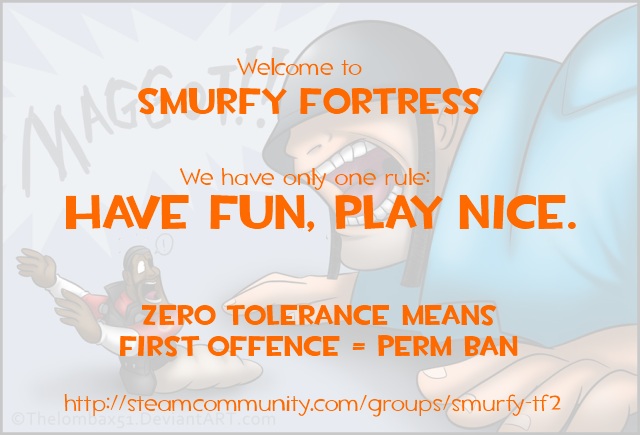
Smurfy's culture was best embodied in the one simple rule that we had. "Have fun. Be nice."
These four words ended up reflecting our approach to everything so it's worth dissecting them.
"Have fun."
Above all else, gaming is about having fun.
Fun means different things to different people but broadly speaking it boils down to two things:
Players enjoy themselves when they feel like they are having an impact on the game. It's not fun to be steamrolled, and equally it's not much fun to smash the other team, though most players would feel that's a better option than being steamrolled. For most people the ideal game is one where the teams are balanced, where newbies and experienced players alike feel challenged but not overwhelmed.
Players don't enjoy being abused. Without necessarily expecting the other extreme of sunshine and rainbows, if we could measure the vibe in game along a scale of hostile to friendly, we should at the very least be in the friendly half of the spectrum. This leads us to "be nice".
"Be nice."
Fundamentally you can't force people to be nice. And nice is itself rather vague. Certainly there is no comprehensive list of nice behaviours that we could point players to and say "do this" so the best way to build a nice culture was to behave in the way we wanted others to behave.
In psychology or behavioural economics circles the lingo used to describe what we did would be establishing "norms" and providing "incentives".
It's impossible to overstate the value of seemingly unimportant behaviours. Small things like saying hello to each other or congratulating an enemy player if they get a good shot on you go a long way towards establishing norms.
I was fortunate that I'd met enough nice players over 4 years of TF2 that I could start Smurfy with enough founding admins that would behave the way we wanted our community to behave. That planted the seed for our community's culture.
As the community grew and we added admins, existing admins were given the ability to veto new admins. Since we didn't all play at the same time it was important that if a candidate had been seen behaving in less than ideal ways that they could be immediately ruled out. I felt that it was worse to have a bad admin/representative than to not have the admin at all. Businesses refer to this as hiring "B" or "C" players.
Adding admins was one way to entrench our culture but the most impactful method was via our Elder Smurfs.

Superficially the Elder Smurfs program recognised friendly players with an in-game greeting and provided them the power to !votekick and !votemute troublemakers.
The design of this was not an accident (although certainly the success of the program went far beyond my expectations!). We knew we needed more eyes to police the servers as admins could not be present 24x7. But I also knew that by publicly recognising the Elder Smurfs with the in-game greeting other players would see that there was a benefit to behaving well (besides not being banned). Essentially we provided an incentive for good behaviour, and importantly via a mechanism that could not be gamed which is a problem with most reputation systems.
At a more abstract level there was an underlying design goal that whatever mechanisms we came up with should always encourage desirable behaviour so that good behaviour drowns out bad behaviour, as opposed to solely playing whack-a-mole with bad behaviour.
There's an element of the broken windows theory at play, essentially that if the servers are ever unpoliced and bad behaviour reigns it would encourage others to behave badly, as well as attract further bad actors as a norm of bad behaviour is established. On the other hand, by entrenching good behaviour as our norm, we attracted players looking for servers with well behaved players and created a self-reinforcing cycle of good behaviour.
At a philosophical level, my belief is that although there is a lot of horrible behaviour online, many of these bad actors are not fundamentally "bad" people. The vast majority of anti-social behaviour online occurs because people see others behaving badly. One player yelling "rekt" on every kill incenses others to join in with their own "rekt" or "get on my level". It takes cooperation from everyone to keep the peace yet only one person to start a war.
Our experience with ban appeals bears this out. 99% of the ban appeals we received were sensible in their tone – even those players who were extremely "trollish" in their prior behaviour – and the vast majority were observed to behave pleasantly in-game once it was explained why their behaviour was unacceptable. Only a handful would misbehave and be rebanned.
Furthermore, our ban appeal system was designed to maximise the possibility of bad actors "coming around". Our admins were strongly discouraged from interacting with abusive players in-game, with all appeals handled exclusively via email.
The idea was to separate the misbehaving player from their in-game mindset, giving them a chance to cool down and think about why they were banned. It's also much easier to be more verbose in email than via in-game chat, where everyone generally tries to be terse so they can get back to shooting things, leading to much miscommunication.
The language we used in our replies was chosen to convey the idea that we take bans (i.e. misbehaviour) seriously but at the same time we were keen to give players a second chance as long as they acknowledged their misbehaviour and agreed to play nice in future.
It's worth considering the alternatives to our "Have fun. Be nice." setup.
Many communities explicitly list bannable behaviour.
With this approach troublemakers take it upon themselves to look for creative ways to violate the spirit of the rules without explicitly breaking them. i.e. if you ban swearing they might then refer to others as a bundle of sticks. Typically this ends up in an arms race with an ever growing list of rules.
Furthermore it allows troublemakers to chew up your admin time and brainspace as not only do you have to try to come up with a rule set that won't be worked around but you also end up in arguments with such players about whether their behaviour is bannable.
Guiding principles
At a conceptual level the above decision is one of whitelisting vs blacklisting. Smurfy chose to (very crudely) whitelist good behaviour. Lists of rules with bannable offences are essentially blacklists. Wherever possible, whitelisting is usually better than blacklisting.
In general, if you're going to spend time or resources on a gaming community it should be focused as much as possible on enhancing the community rather than fighting bad actors. If you reach a point where the majority of time is spent on negative aspects of the community then it may be time to reevaluate your entire approach.
In particular, if your approach to problems is take feature X away from everyone, both good and bad players alike, then I posit that your design thinking is fundamentally flawed. That approach leads to bad actors dictating the direction of your community.
Mini-rant: This is the approach that Valve took when they essentially blacklisted all community servers in response to a few community operators doing Bad Things. By tarring all community servers with one brush they allowed the bad operators to dictate the future of the TF2 community.
Valve could have blacklisted the bad servers or, since those bad servers would likely have reappeared in a different form, they could have whitelisted good community servers.
As another example, some % of Steam users get phished so Valve gradually escalated trading security requirements. First you had to confirm all trades via email, then they added trade holds such that if you don't enable their Mobile Authenticator your trades will be held for up to 3 days.
Essentially they let phishers/scammers dictate the level of (in)convenience for all Steam users.
Summary
Running a gaming community is really no different to running a business. Start by understanding what your players/customers want, figure out what's important to them, then do everything you can to achieve that.
Culture gives you a framework within which to operate. If your culture is strong and you work to constantly reinforce that culture then you can do away with formal processes and rules and keep things simple.
On the other hand, if your culture is weak, you'll find yourself spending increasing amounts of time writing rules for people to follow.
I realise this post paints an overly glowing picture of Smurfy's approach. In future posts I hope to discuss further details of our operations and highlight both the positives and negatives as everything we did involved some tradeoff.
